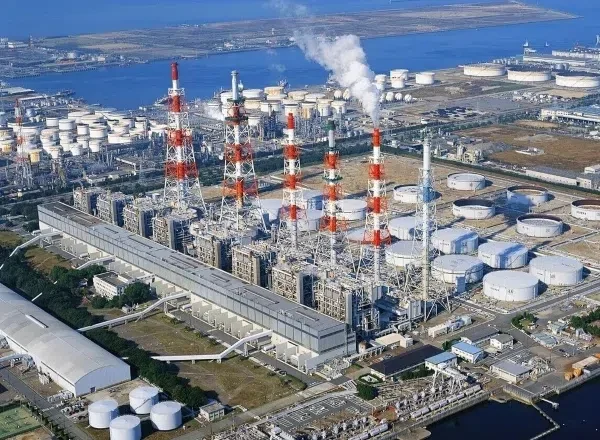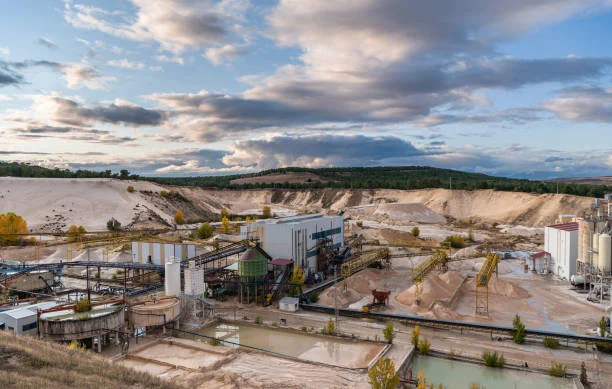
Introduction
Sodium cyanide (NaCN), as an important inorganic compound, exhibits significant catalytic effects in the Petrochemical Industry due to its unique chemical properties. Its strong alkalinity, coordination ability, and nucleophilicity make it a key catalyst or additive in a variety of chemical reactions. This article will discuss its role in the petrochemical industry from aspects such as the Catalytic Mechanism, application fields, and safety.

I. Catalytic Mechanism of Sodium Cyanide
1.Formation of Metal Complexes
The CN⁻ ion has extremely strong coordination ability and can form stable complexes with transition metals (such as Ni, Co, Fe, etc.). These complexes can activate substrate molecules in catalytic reactions and reduce the activation energy of the reaction. For example, in the hydrocyanation of olefins, the catalyst formed by Sodium Cyanide and nickel salts can efficiently promote the addition reaction of olefins with HCN to produce Nitrile Compounds.
2.Nucleophilic Catalysis
As a strong base, sodium cyanide can provide CN⁻ as a nucleophilic reagent to participate in nucleophilic substitution or addition reactions. For instance, in the cyanidation of halogenated hydrocarbons, CN⁻ substitutes the halogen to form nitrile compounds, which is an important route for the synthesis of organic nitriles.
3.Regulation of the Alkaline Environment
Sodium cyanide hydrolyzes to produce NaOH and HCN, which can regulate the pH value of the reaction system and promote certain acid-base catalytic reactions (such as the hydrolysis or condensation of esters).
II. Typical Applications in the Petrochemical Industry
1.Synthesis of Nitrile Compounds
Production of Acrylonitrile: In the process of the ammoxidation of propylene to produce acrylonitrile, Sodium cyanide can be used as a catalyst additive to improve the reaction selectivity and yield.
Synthesis of Adiponitrile: Through the hydrocyanation reaction of 1.3-butadiene, sodium cyanide catalyzes the formation of adiponitrile, which is a key raw material for nylon-66.
2.Carbonylation Synthesis and Hydrogenation Reactions
In the carbonylation synthesis reaction, sodium cyanide acts synergistically with the cobalt catalyst to promote the addition reaction of olefins with CO and H₂ to produce aldehyde or alcohol compounds.
As an additive in hydrogenation reactions, sodium cyanide can regulate the surface electronic state of the metal catalyst and enhance the reaction activity.
3.Petroleum Cracking and Desulfurization
During the petroleum cracking process, sodium cyanide can inhibit the coking reaction and extend the service life of the catalyst.
It is used for the removal of sulfur-containing compounds (such as mercaptan removal). Through nucleophilic substitution reactions, mercaptans are converted into sulfides or disulfides.
III. Advantages and Challenges
Advantages:
High catalytic activity and selectivity, suitable for a variety of complex reaction systems.
Low cost and easy for industrial application.
Challenges:
Toxicity Risk: Sodium cyanide is highly toxic, and strict control of operating conditions is required to prevent leakage or contact.
Environmental Issues: Cyanide-containing wastewater needs to be treated (such as by alkaline chlorination method) to meet the discharge standards to avoid ecological hazards.
Competition from Alternative Technologies: With the development of green chemistry, biocatalysis or ionic liquid catalysts are gradually replacing some sodium cyanide processes.
IV. Safety and Environmental Protection Measures
Production Protection: Use closed equipment, be equipped with a hydrogen cyanide detection and alarm system, and operators need to wear protective clothing and gas masks.
Wastewater Treatment: Convert CN⁻ into non-toxic CO₂ and N₂ through the oxidation method (such as using ClO₂ or H₂O₂).
Process Optimization: Develop recycling technologies to reduce the consumption of sodium cyanide; explore cyanide-free catalytic systems (such as using organic nitriles as substitutes).
Conclusion
Sodium cyanide, with its unique catalytic properties, plays an important role in the petrochemical industry, especially in fields such as nitrile synthesis and carbonylation reactions, where it is irreplaceable. However, its toxicity and environmental risks also drive the industry to transform towards safer and greener catalytic technologies. In the future, with the progress of catalyst design and process optimization, the application of sodium cyanide will become more efficient and sustainable.
- Random Content
- Hot content
- Hot review content
- Toxicity Assessment of Sodium Cyanide and Relevant Hazard Prevention Measures
- Flexible Customer and Supplier Relations Specialist (Location: Thailand)
- Collector BLK-301/Composite Flotating Active Matter ≥60%
- Sodium Metal, ≥99.7%
- Sodium Peroxide
- Fertilizer magnesium sulfate/magnesium sulfate monohydrate
- Sodium Metasilicate Pentahydrate
- 1Discounted Sodium Cyanide (CAS: 143-33-9) for Mining - High Quality & Competitive Pricing
- 2Sodium Cyanide 98% CAS 143-33-9 gold dressing agent Essential for Mining and Chemical Industries
- 3Sodium Cyanide 98%+ CAS 143-33-9
- 4Anhydrous Oxalic acid 99.6% Industrial Grade
- 5Soda Ash Dense / Light 99.2% Sodium Carbonate Washing Soda
- 6Oxalic acid for mining 99.6%
- 7Reagent Grade/Industrial Grade Hydrochloric Acid min.31%
- 1Sodium Cyanide 98% CAS 143-33-9 gold dressing agent Essential for Mining and Chemical Industries
- 2High Quality 99% Purity of Cyanuric chloride ISO 9001:2005 REACH Verified Producer
- 3 High-Quality Sodium Cyanide for Leaching
- 4Powdery emulsion explosive
- 5Industry Grade Electron grade 98% Sulfuric Acid H2SO4 Sulphuric Acid Battery Acid Industrial Sulfuric Acid
- 6Colloidal emulsion explosive
- 7sodium hydrosulfide 70% flakes used Mining Industry












Online message consultation
Add comment: